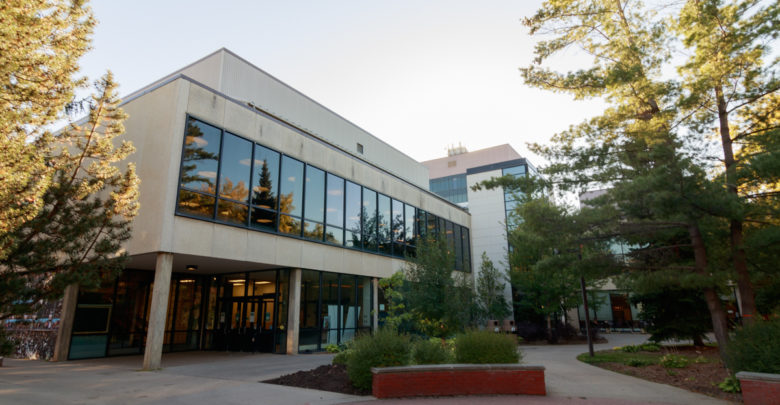 Christien Ford
Christien FordIn academia, one rarely responds to criticism with dismissive laughter. Yet, this is exactly how President Bill Flanagan chose to respond to criticism over the U of A Tomorrow initiative in a town hall on November 19. Unfortunately, we don’t need Flanagan’s laughter to know U of A Tomorrow’s consultation process is a joke.
For months, many criticized the shallow consultation undertaken by the university administration on academic restructuring. Instead of including the voices of students and staff, town halls are structured to silence them. As a result, the administration closed themselves off to vital feedback which would have led to the best possible academic restructuring model, instead of the three flawed proposals before us.
Of course, one could be forgiven for not immediately recognizing the exclusion of campus voices while watching town halls. After all, the atmosphere of these events seem serene. This is largely due to the demeanor of President Flanagan and Provost Steven Dew, who, in calm and calculated words, go through a nearly-identical presentation on restructuring at every town hall. The rest of their time is spent on a Q&A session full of what appear to be mostly softball questions. In the end, it seems like the campus has welcomed Flanagan, Dew, and their restructuring proposals with open arms.
However, when we look closer, it becomes evident these town halls are masterful pieces of political theatre — productions which glosse over the real frustration and concerns held by many students, staff, and alumni regarding academic restructuring.
This becomes clear when examining how much time at these “town halls” are disappotionaely wasted on presentations. I understand that it’s important to unpack proposed restructuring models — many of these proposals are extremely complex. Yet, these presentations typically took around 30 minutes to administer — despite town halls themselves only being an hour. As a result, half of the time was not spent on community feedback but was administration simply listening to the sound of their own voice.
When Q&A sessions did come at the end of presentations, they were limited. Specifically, the Thoughtexchange program ensured that presenters had a disproportionate amount of power over these sessions. While the program allowed for the audience to ask questions in real time, it additionally placed an artibutaty character limit on questions and provided presenters with the power to moderate the questions they received. It appears this power might’ve been used during town halls when participant Scott Harris had their question “dismissed by the host” at a town hall. Beyond this, because most town halls had no independent moderator, presenters could also choose to not answer certain questions or give non-answers to important questions.
Now, we can’t be sure of the extent to which the university administration took advantage of these tactics in Q&A sessions. Yet, the possibility that administration could have exercised any of these features should be reason enough to delegitimize these town halls.
Finally, the last town hall had a distinct aspect: a Zoom roundtable, composed of students and staff, to question Flanagan and Dew about academic restructuring. If done properly, this would’ve been a positive improvement on the consultation process. Sadly, the university administration spoiled this idea by pre-selecting roundtable participants. Specifically, faculties and units each selected four participants for the town hall, thereby closing participation to the public.
Luckily, a few roundtable participants — namely Adrian Wattamaniuk and Winston Pei — raised some substantive concerns over academic restructuring. However, this was the result of participants overcoming the exclusive structure of consultations, rather than the university authentically seeking out their perspectives.
If there was any doubt over this, it was put to rest when Flanagan didn’t engage with either of their comments — instead, Flanagan laughed at Wattamaniuk’s remarks and ended the town hall before responding to Pei’s concerns.
Overall, the only conclusion one can come to is that these “town halls” fell short of meaningful and authentic consultation. In contrast, the structure of U of A Tomorrow town halls served to exclude participants and their vital feedback. The university’s own data on the consultation process reflects this, as only 16 per cent of staff feel their feedback was heard in the construction process.
Undoubtedly, many students and staff felt frustrated by this process. Yet, the biggest victim of these faux consultation sessions is the administration, who rob themselves of the valuable knowledge that the campus community possesses.
Admin may not understand this, but the critical feedback of students and staff doesn’t come from a place of malicious intent. We don’t wish to see academic restructuring fail — similar to administration, we understand the financial pressures put on the university by the provincial government’s historic cuts to post-secondary education. Our criticism and feedback is to help administration come to the best decision for the campus community. Especially when a decision like academic restructuring will have generational impacts at the U of A.
By excluding our voices through shallow consultation processes, the university has closed themselves off to the wealth of knowledge which exists on our campus. Within the last semester, we’ve had a professor win a nobel prize, a research team get close to finding a cure for diabetes, and a famous actor praise our Faculty of Native Studies — the only faculty of it’s kind in North America. Surely, we could have found the best possible restructuring model for the university as well.
This is most clear when considering a group of professors created an alternative restructuring proposal: the “Invisible College Model.” The model solves the concerns over faculty autonomy, preserves the U of A outward face, and results in the same amount of cost-savings, if not more, than the administration’s preferred college model.
Now, the model is not necessarily the perfect solution. However, what the proposal demonstrates is that, if professors and students had been genuinely included, we could’ve had better and stronger restructuring models which resolve many of the critiques levelled at the three existing proposals.
The fact that a handful of professors — who already work an insane amount of hours teaching and conducting research — could come up with such a detailed model which addresses substantial concerns demonstrates the potential administration missed out on by blindly excluding them.
What the Invisible College Model truly shows is that the three proposed restructuring scenarios are not the only three which could work for the university. Administration would know this if authentically listened to their own staff and students. Instead, their town halls silenced them.
Given the short timeline for finalizing the restructuring process, I only hope the General Faculties Council (GFC) rejects all three of the Academic Restructuring Working Group’s proposed restructuring models. Instead, they should choose to undergo a true consultation process with students and staff. In doing so, GFC could succeed where the university administration failed, by recognizing that the solution to restructuring is found by engaging with campus voices rather than excluding them.
Correction: On November 23, 2020 at 1:15 p.m., the article was rectified to correct information about the Invisible College Model. The Gateway regrets the error.




